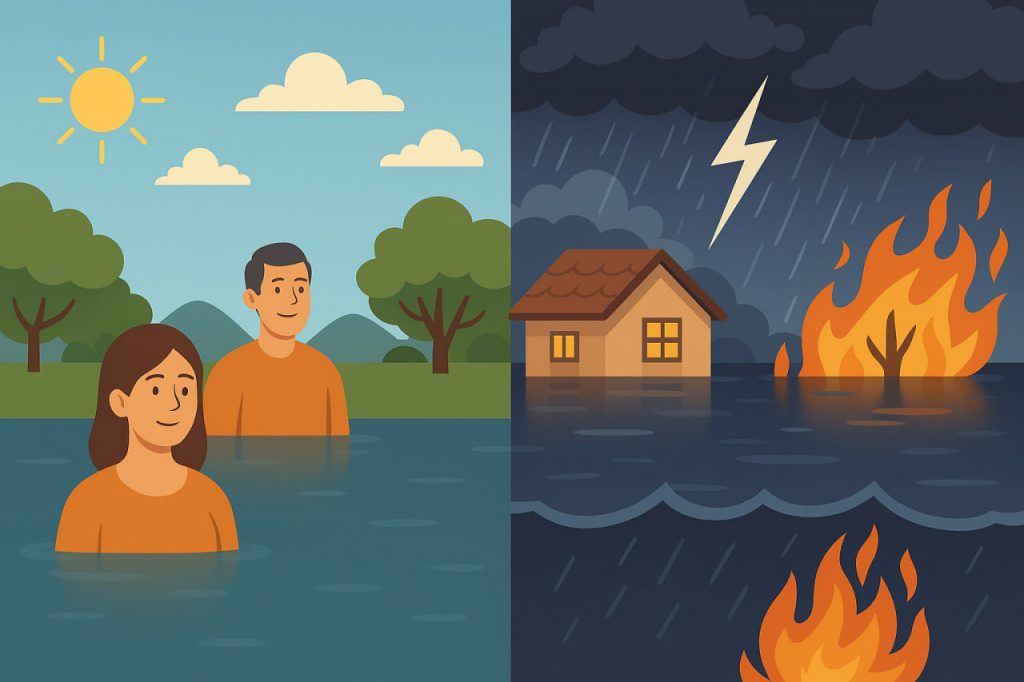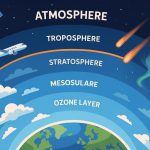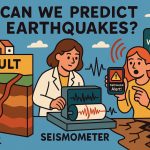Throughout Earth’s history, our planet has endured countless natural disasters — some predictable, others striking with terrifying suddenness. Modern climate change has made these events more frequent and intense, yet one question remains crucial: how much warning do we really get before catastrophe strikes? From floods and hurricanes to droughts and glacial melts, climate disasters often appear to come out of nowhere, but science shows that most of them are preceded by subtle, measurable signs. Understanding these signs is key to saving lives and preparing for a rapidly changing future.
The Hidden Build-Up Behind Sudden Disasters
While a climate disaster can seem instant — a flash flood, a sudden wildfire, or a devastating storm — the processes that cause them usually develop over long periods. Rising global temperatures, deforestation, and pollution gradually push ecosystems to their limits until they finally collapse.
For example:
- Hurricanes begin as warm air currents over the ocean, growing stronger for days or weeks before landfall.
- Floods often follow months of heavy rainfall or melting snow that saturates the ground.
- Wildfires erupt suddenly but are usually fueled by long dry seasons and accumulated dead vegetation.
In other words, what appears “sudden” is usually the final stage of a slow, invisible buildup of instability.
Sudden Events in the Geological Record
Looking deeper into Earth’s history, there are examples of truly abrupt climate changes — shifts that occurred within mere years or even months. One famous example is the Younger Dryas period around 12,800 years ago, when temperatures in the Northern Hemisphere plummeted abruptly after millennia of warming. Scientists believe this was caused by a massive influx of freshwater disrupting ocean circulation.
Other sudden changes, like volcanic winters or asteroid impacts, show that natural forces can sometimes alter the planet’s climate almost overnight.
Why Climate Disasters Feel More Sudden Today
Modern society amplifies the perception of suddenness. Urban expansion, infrastructure overpopulation, and the concentration of people in vulnerable zones — such as coastal cities or arid regions — make even small events catastrophic.
Additionally, global communication ensures that we see disasters as they unfold in real time, heightening the sense that they strike without warning.
Early Warning Systems: Humanity’s Shield
Despite the unpredictability of some events, science and technology now allow us to predict many disasters hours or even days in advance. Satellites, climate models, and remote sensors track atmospheric changes, ocean temperatures, and seismic activity. These tools give scientists vital time to issue alerts for:
- Tsunamis — minutes to hours of warning after undersea earthquakes.
- Hurricanes and Typhoons — several days to prepare for impact.
- Heatwaves and Droughts — often forecast weeks ahead.
However, extreme or compound events — such as simultaneous wildfires and droughts — are still difficult to anticipate precisely.
Can Sudden Climate Shifts Happen Again?
Yes — and some scientists warn that they already might be underway. If global tipping points such as polar ice melt, Amazon forest dieback, or ocean current collapse are crossed, the climate could change abruptly and irreversibly. These events might unfold over decades, but their consequences could transform the planet within a single human lifetime.
The Importance of Preparedness
While we cannot control the timing of natural disasters, we can control our response. Education, early warning systems, and resilient infrastructure can drastically reduce loss of life. Every person who learns how to act during floods, heatwaves, or storms becomes part of a global safety network.
Interesting Facts
- Some volcanic eruptions can cool Earth’s climate within weeks, such as Mount Tambora in 1815, which caused “the year without a summer.”
- The average time from storm formation to landfall for major hurricanes is about 5–7 days.
- Droughts are among the slowest-developing but longest-lasting disasters, sometimes taking years to fully reveal their impact.
- NASA monitors over 26 climate indicators daily, from sea levels to atmospheric CO₂.
- About 90% of all natural disasters in the last 50 years have been weather- or climate-related.
Glossary
- Tipping Point — a critical threshold where small changes can trigger drastic, irreversible effects on the climate.
- Younger Dryas — a sudden cooling event that occurred about 12,800 years ago.
- Volcanic Winter — a temporary global cooling caused by volcanic ash blocking sunlight.
- Heatwave — a prolonged period of excessively hot weather.
- Compound Event — a disaster involving multiple overlapping hazards (e.g., drought + wildfire).


